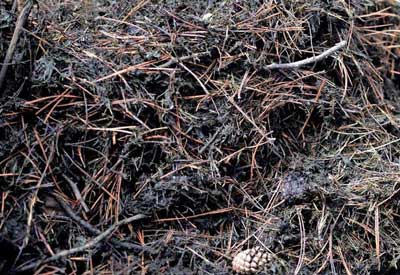The record drought locked on many (and we mean many) parts of the country calls for home gardeners as well as commercial interests to rethink their watering strategies. Equally important to organic gardeners is the moisture content of their composting pile.
Moisture in compost is critical and having too much or too little can slow or sour the process. Having too little will slow or stop the composting process. Having too much moisture in the pile will fill the necessary air spaces and turn the process into an anaerobic digester something most garden composters want to avoid (though it is an accepted composting technique with its own set of requirements).

FREE SHIPPING!
Compact (88 gal.)
The perfect size for families that generate 2-3 bags of material monthly.
Learn moreWith the right equipment, turning garbage into garden gold is a cinch! At Planet Natural we supply everything you need: bins, tumblers and activators to get your pile cooking, plus compost turners to aerate your heap. Now, let’s rot!
How do you know if your compost pile needs watering? Most expert composters suggest a moisture content of 40% to 60%. A quick, hands-on visual check should tell you if the pile is too dry: it will lack heat and there’ll be little evidence of organic material break down. If you compost is too wet, it’s probably slimy and smells bad. A good rule-of-thumb is the sponge test: your compost should have the consistency and moisture content of a wrung-out sponge when you squeeze it. Compost moisture meters are available but are more useful to commercial composters. They’re not really necessary for the home composter who can tell by feel how their pile is doing (they also require multiple readings — one part of your pile may be damper than others — and tend to be expensive).
Solutions? Easy… If your compost is too dry, water it from the top down until you reach the desired “wrung sponge” consistency. A good turning at this point will aid in even distribution of moisture. If your compost it too wet, try adding newspaper paper, brown (unbleached) cardboard or chopped straw (make sure it’s seed free if you can). The idea is to open up your pile’s insides so that more air may circulate through. Adding air by turning your pile can also help (but is a lot more work). The best time to get you pile’s moisture content just right is when you build it. Once a pile is started properly it’s almost self-maintaining (minus that turning). There’s also the chance that if you live in a wet coastal climate your pile will be too wet because of frequent rains. Covering your pile with straw or even a tarp will help. And it will help contain heat.
One of the best ways to maintain your compost’s moisture content is to process it in a compost bin or tumbler. Not only will it help your compost retain moisture that might be lost through evaporation, it makes turning — the introduction of air — easy. And if you happen to live in a place where rain is abundant, it will keep moisture from you compost. This summer, few of us can imagine that kind of problem.











